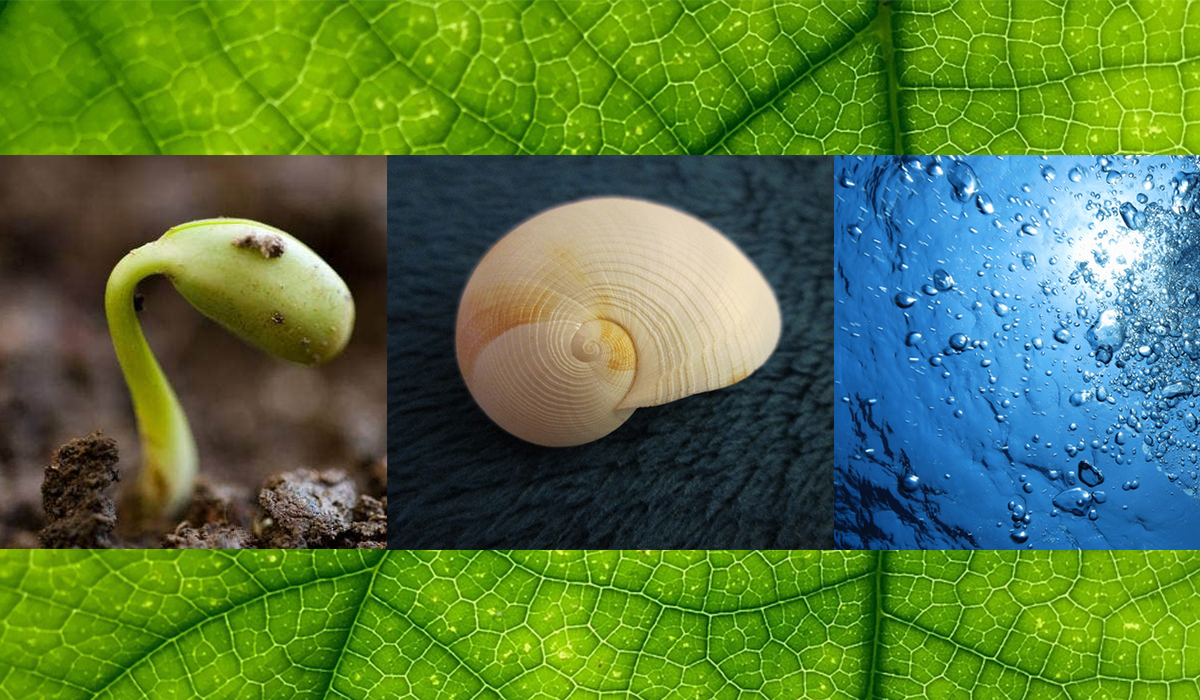In the last few years, Carbon
Capture and Storage (CCS) has increasingly been held out as a promising method
for decarbonizing by essentially removing large amounts of existing CO2 out of
the atmosphere. However, the technology to achieve it still needs to improve in
order for it to be truly scalable.
Fortunately, for the engineers and scientists working hard behind the scenes,
there’s already a blueprint for how to turn CO2 into an advantage: Nature
itself.
Indeed, while carbon dioxide has become the
poison of our era, it is also an essential building block for our ecosystems.
From leaves and fungi to seashells, companies are replicating nature’s own
inventions to halt the warming of our planet:
Artificial
seashells
A team of scientists from the University of
California have taken inspiration from seashells to capture CO2. Seashells are formed
from the carbon dioxide that dissolves in the ocean and form part of a natural
equilibrium where the same amount of carbon dioxide captured in water is pulled
from the atmosphere.
- With the aim to speed up the
transformation of carbon dioxide into minerals, the team tested a prototype
that pulls in seawater and creates limestone and magnesite, the same materials
created by mollusks to form seashells.
- The machine pulls in water that
runs through a mesh that gives the water an electric charge, triggering a
chemical reaction that creates limestone and magnesite. The materials can then
be disposed of on land or released back into the ocean. The seawater can also
flow back into the ocean, where it can absorb more CO2.
- One essential perk of the
technology is its energy efficiency, as seawater naturally absorbs CO2 at a
very high concentration — some 150 times the level in air. The process also
produces hydrogen as a by-product, which can be used to help run the equipment.
- By mimicking a natural process,
there is also no need for further storage solutions, such as compressing gas,
where the CO2 can stay trapped in the materials for millions of years.

Replicating
photosynthesis
A Sino-American group of scientists
have taken their cue from the forest, or more specifically: leaves. Working out of the University of
Waterloo, Ontario, the team has created an artificial leaf that replicates the
natural process of turning CO2 and water into glucose and oxygen through
photosynthesis.
- While a leaf produces glucose and
oxygen, the artificial version instead produces methanol and oxygen. The key is
cuprous oxide, a chemically produced powder engineered to have as many
eight-sided particles as possible.
- When added to water, the cuprous
oxide serves as the catalyst, with carbon dioxide pumped in and a solar
simulator shining a beam of white light into the solution.
- The resulting chemical reaction
creates oxygen through photosynthesis, while the CO2, water, and powder
solution are converted into methanol. The methanol is then boiled and collected
as it evaporates.

CCS for
agriculture
Australian company Soil Carbon
is looking to use fungi to capture carbon from the air and store it in the
soil. The developers ultimately aim to kill two birds with one stone: reduce
atmospheric carbon, and restore some of the 60% of organic carbon which have
been lost in the global cropping belt.
- The company looked through a
library of 1,500 microbes to find which ones will be ideal for sequestering
carbon.
- Through fungal treatment, the
microbes are applied to the crop seeds where carbon in the form of stable
sugars builds up around the roots of the plants — potentially storing carbons
in the soil for hundreds or thousands of years.
- The team hopes that the method
will help the agricultural industry meet carbon targets. So far, field trials
have been successful, with an average 7% yield increase and 2.6-ton increase in
tradable carbon per hectare.

Champagne-inspired
carbon extraction
A group of scientists from the
University of Exeter has found an unlikely source of inspiration in their quest
to trap CO2: Champagne. Their technology works in a similar
way as the process of capturing the carbon dioxide bubbles in a fizzy drink.
- Through natural-based processes,
the carbon is removed from seawater to be stored, while the water is returned
to capture more carbon dioxide.
- The process involves making
seawater more acidic, which helps get the CO2 to ‘bubble out’, then delivers a
concentrated carbon dioxide stream to be stored. The team plans on designing a
pilot plant to remove at least 100 tons of CO2 per year.
- The only ingredient needed, apart
from seawater, is electricity, and the team will use wind power to fuel the
process.

Carbon capturing concrete
California-based cleantech company Blue Planet Ltd. is emulating nature’s
strategies to make concrete more sustainable. The company’s process creates a limestone rock substitute that can replace
aggregate for concrete.
- Drawing on carbon capture similar
to natural ooid rock formation, Blue Tech has found a way to introduce CO2
captured from flue gas to a water-based capture solution. The process creates a
carbonate solution coated over a nucleus or substrate — creating synthetic
limestone.
- As the coating is made up of 44%
captured CO2, each ton of the final product represents 440 kilograms of
captured carbon dioxide. It is then exposed to recycled aggregate material
which contains sufficient alkalinity, recharging metal ions such as calcium,
magnesium and iron. This reaction causes the metal ions to release and combine
with the carbonate solution to form a mineral coating – similarly to how ooid
rocks form.
- The new method eliminates the need
for further purification steps, saving both money and energy — all while
replacing natural limestone rock that must be mined.
